INTO THE LIGHT
How a shipping container brought electricity to a powerless town
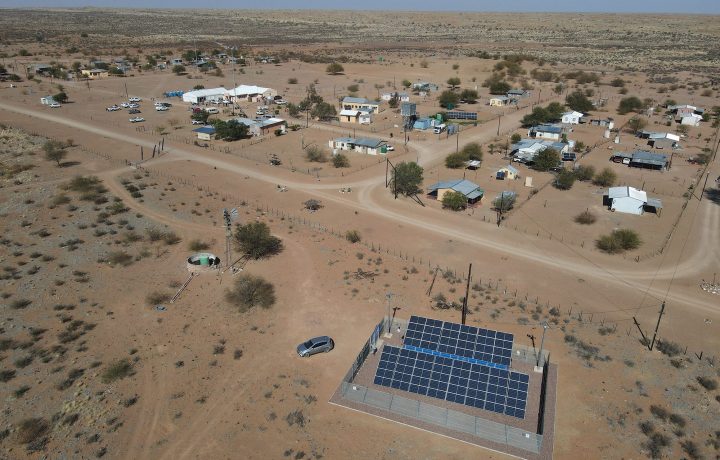
Access to electricity for the first time has changed a remote community – and it means a lot for their future.
Languishing in the dark and cooking over fires long after the advent of democracy, the people of a Swartkopdam community have had their lives changed by a containerised microgrid powered by the sun.
In the heart of the Kalahari, tucked away from the bustling world, lies a tiny settlement called Swartkopdam. For decades, this close-knit community of 40 or so homes has been without many modern conveniences, their lives bound by the absence of a fundamental resource – electricity.
Then, days before Christmas last year, a ray of hope pierced the darkness, illuminating their lives with a groundbreaking development – a containerised microgrid harnessing the region’s abundant sunlight.
Before they had access to clean, renewable energy, the people of Swartkopdam had to resort to more archaic methods of cooking meals and heating water, over open fires and relying on candles for light.
Since the microgrid came online, the boiling of electric kettles can be heard in households across the town, signifying a small, but profound shift in their daily lives.
The residents now have access to the simplest yet most vital appliances – a privilege that many take for granted in the urban centres of South Africa – boiling water in kettles, heating water in geysers and refrigerating their food.
Resident Graham de Klerk illustrated this point to Daily Maverick.
“Electricity makes things very easy for us and it’s very good. We are very happy about it. Because sometimes you must wake up early in the morning and make some coffee or make some warm water and then you can put a kettle on. So we are very happy for it [electricity].”
Asked what life was like before they had access to electricity, De Klerk explained that “it was not so easy, because we had to go outside, go into the field and find some wood and come back and make a fire… then put the pot on the fire, but now it’s easy – you just put the kettle on and the water is getting hot. It’s good, very good.”

A house in Swarkopdam, now provided with electricity. (Photo: Ethan van Diemen)
Standing in a dusty street, two residents told how access to electricity had changed their lives.
Katriena Steenkamp said, “Life is much easier than before. We used to rely on gas and gas is very expensive. And now that we have electricity it is much easier. We can boil water much quicker… Before this, we never used fridges and deep freezers. So with meat, it was a problem. We can’t buy a lot because we have to eat it immediately, but now with electricity, it’s better.
“And we also couldn’t use washing machines… we had to wash with our hands and it could take us all day,” said Steenkamp.
Henry Eiman, who was wearing a suit pressed by an electric iron, said he previously had to use an iron warmed on hot coals.
“And now with electricity, it is much better because we are using a proper iron and not the old iron.”
He added that they now had flat screen TVs whereas previously they used very old battery-powered televisions.
Steenkamp said they would use candles and paraffin lamps for lighting, but now they had light at the flick of a switch.

Swartkop residents Katriena Steenkamp and Henry Eiman. (Photo: Ethan van Diemen)
Peter George, ward councillor for Swartkopdam and Noeniput, told Daily Maverick that there was no electricity previously because the area is so remote. This project brought power to every household, he said.
“Every single house in Swartkopdam is now electrified.”
George said it was important that the project didn’t end in Swartkopdam, and that the other small towns in the Kalahari and beyond also deserved access to electricity.
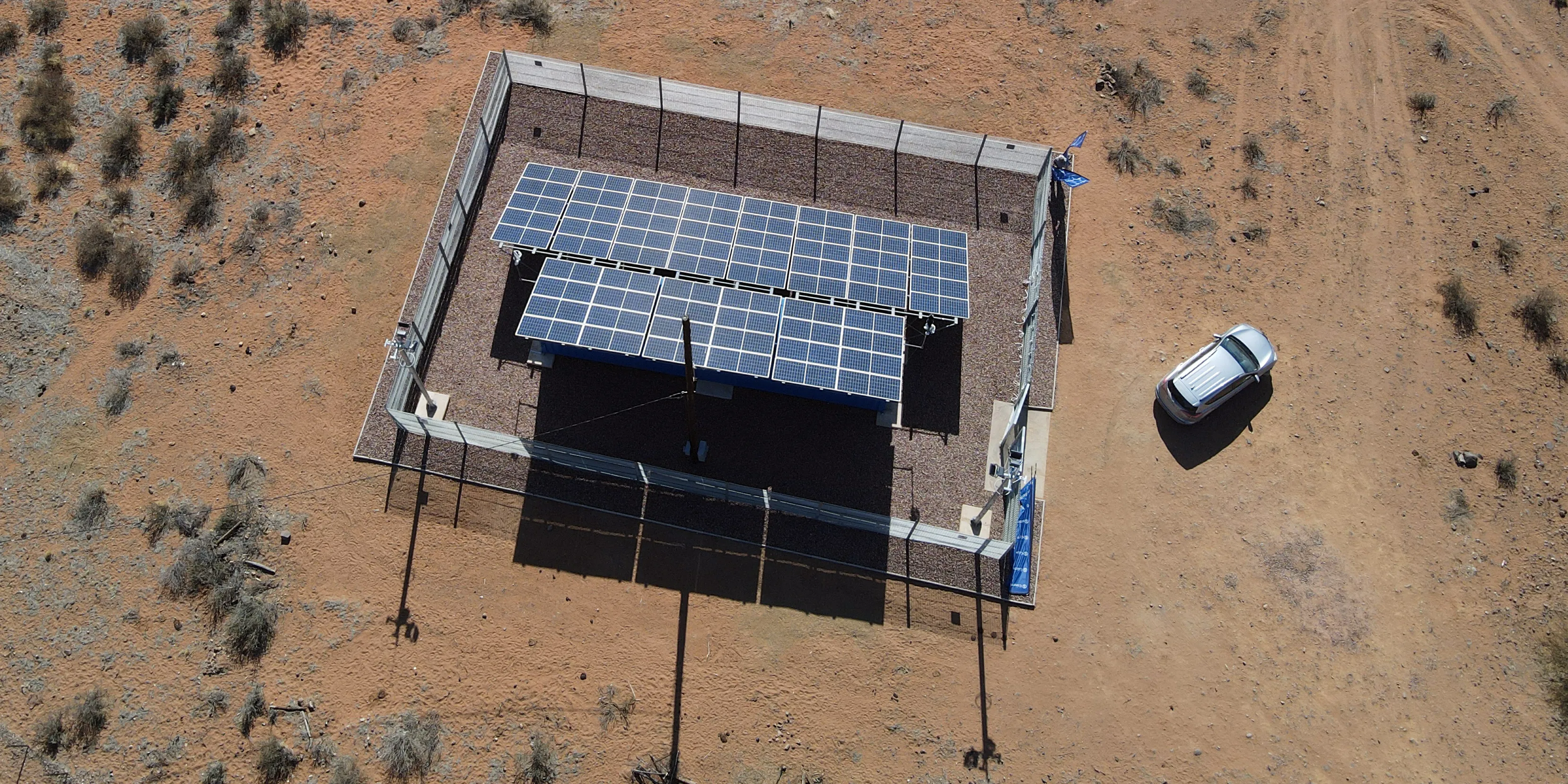
An aerial view of Swartkopdam’s solar microgrid system. (Photo: Ethan van Diemen)
The power that the residents of Swartkopdam now enjoy is generated by a solar panel array of some 43kW, which – in conjunction with lithium-ion batteries and inverters – converts solar energy into electricity.
Nick Singh, Smart Grid Centre of Excellence manager at Eskom, shared more details with Daily Maverick.
“What you’re seeing in front of you is a containerised microgrid. It’s a 12-metre shipping container that is designed so that everything folds up – you can put it on a truck. It was brought here from Mpumalanga, so it travelled about 1,700km and then, within less than a week, it was commissioned and delivering power to the people.”
Singh explained that “the photovoltaic (PV) panels convert solar irradiation into electricity, that’s direct current electricity. The direct current is then converted using inverters into 220 volts of alternating current which is the standard reticulation feed that you’ll have in any household. All the excess energy is then stored in lithium-ion batteries which in turn is converted back into electricity at night, and the plant cycles, so it’s charging energy, using energy and repeating the cycle.”
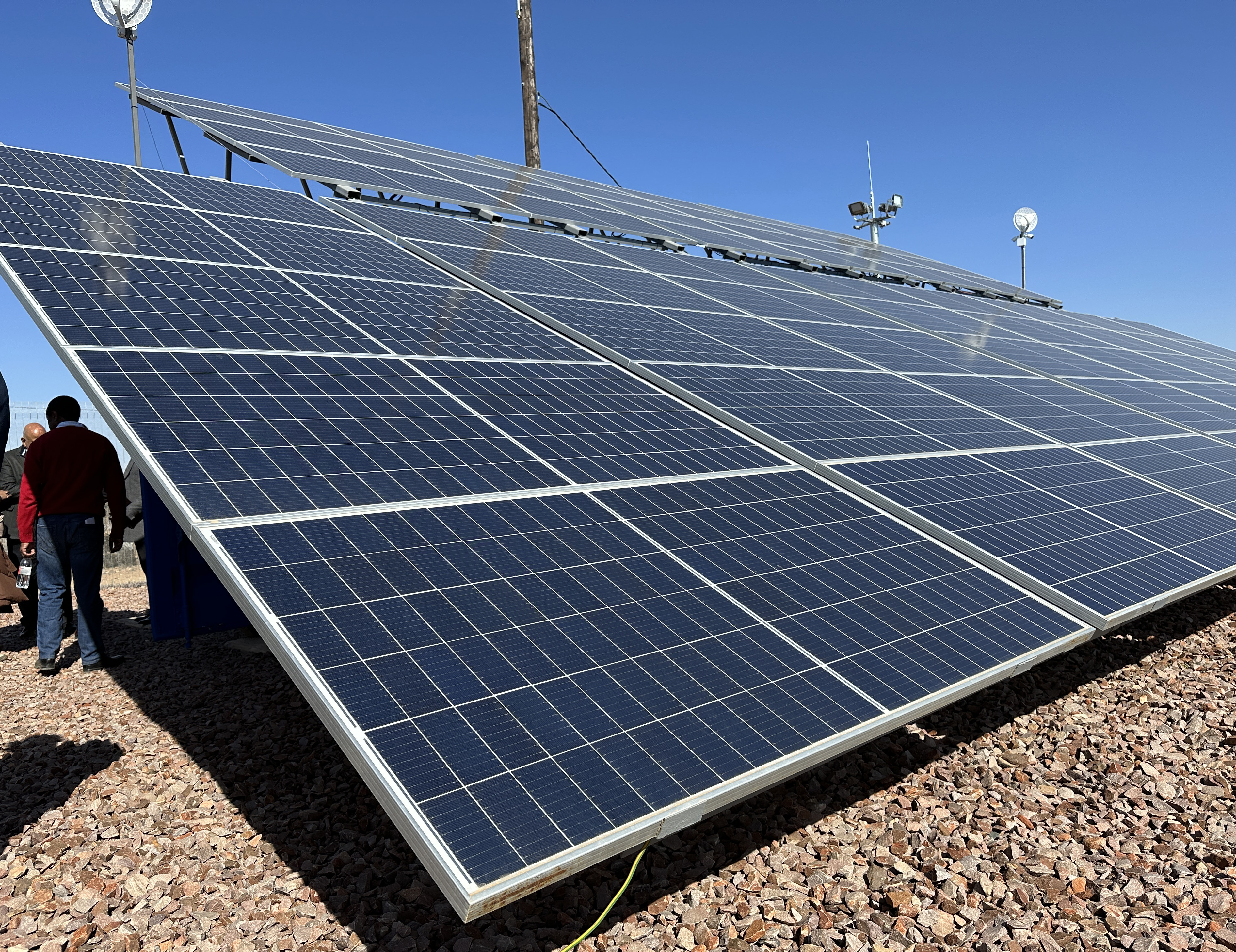
The solar array powering the Swartkopdam community. (Photo: Ethan van Diemen)
“The PV panels have been engineered such that if it rains, it will clean itself, and if not, it will still produce energy. Everything inside can be monitored remotely, so it’s preemptive maintenance. We’ve got monitoring… you know exactly what’s happening. We designed it to almost work autonomously.”
On a tour inside the container, Singh explained, “Everything from the outside fits in here. So you basically just take a shipping container, that legal road weight, no special permits, and you put it on a normal truck, drive it wherever you want and within a week everything is done.”
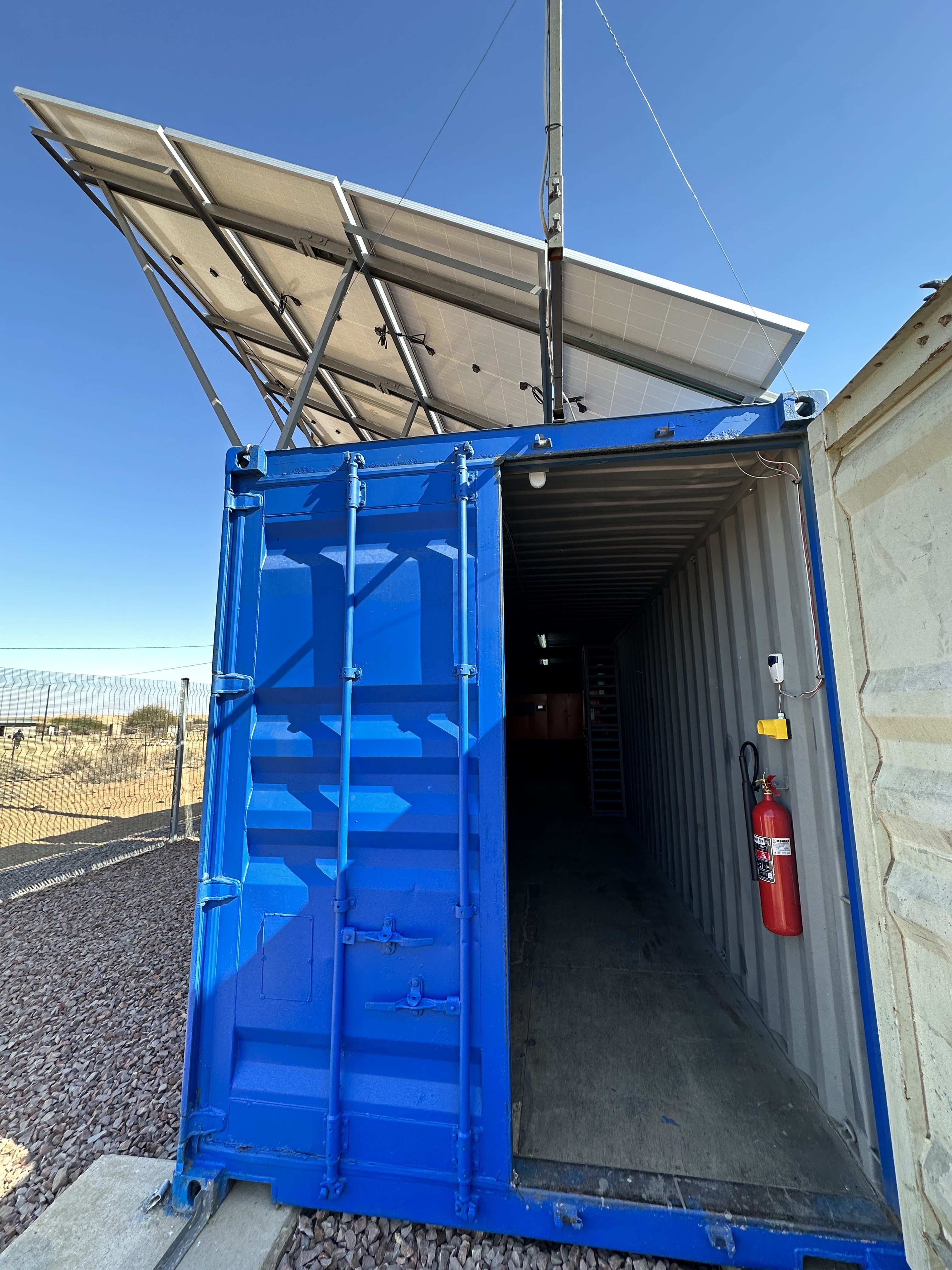
The entire microgrid fits in a standard-sized container (Photo: Ethan van Diemen)
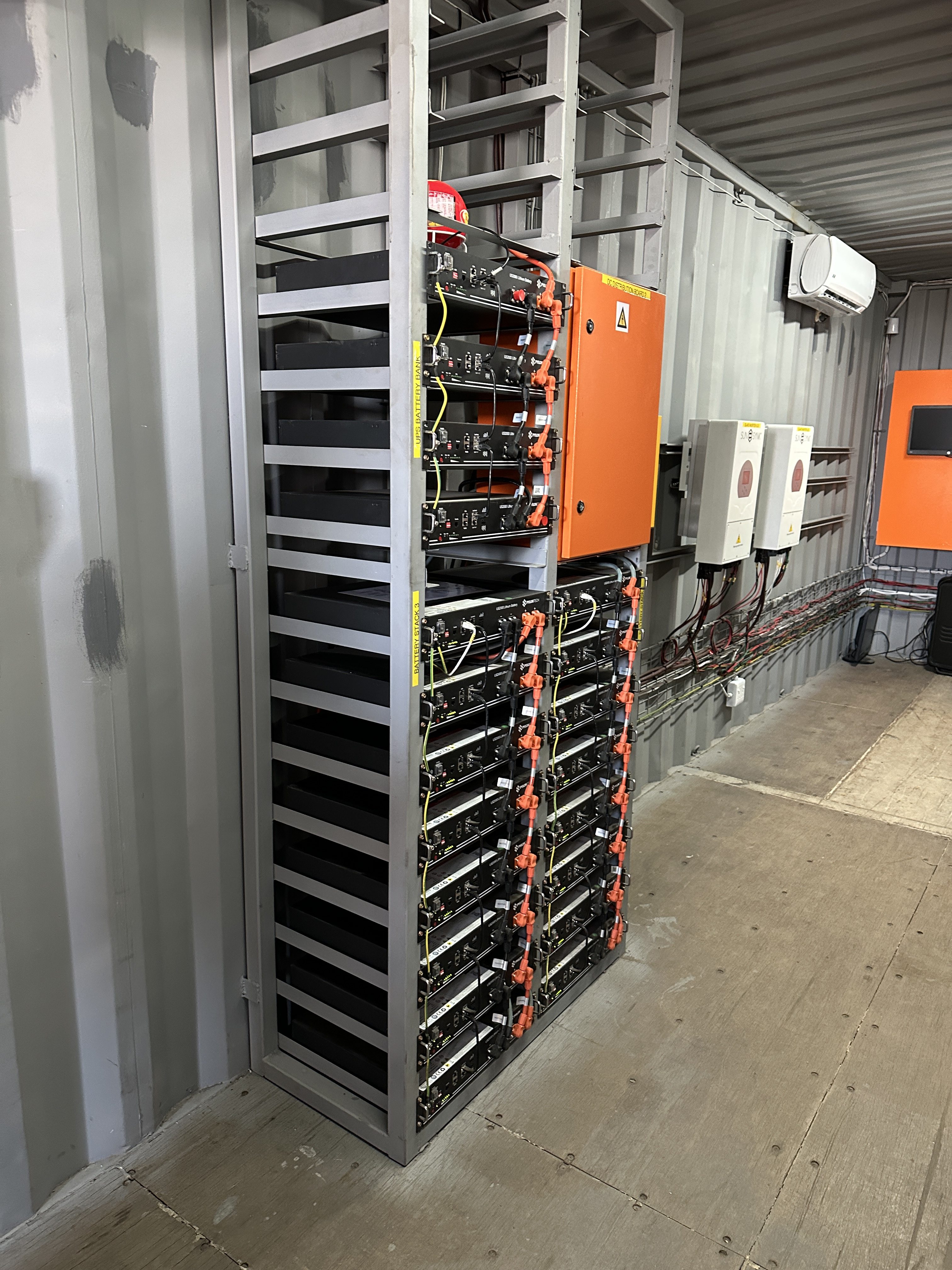
The lithium-ion batteries that store the energy to be converted into electricity when needed. (Photo: Ethan van Diemen)
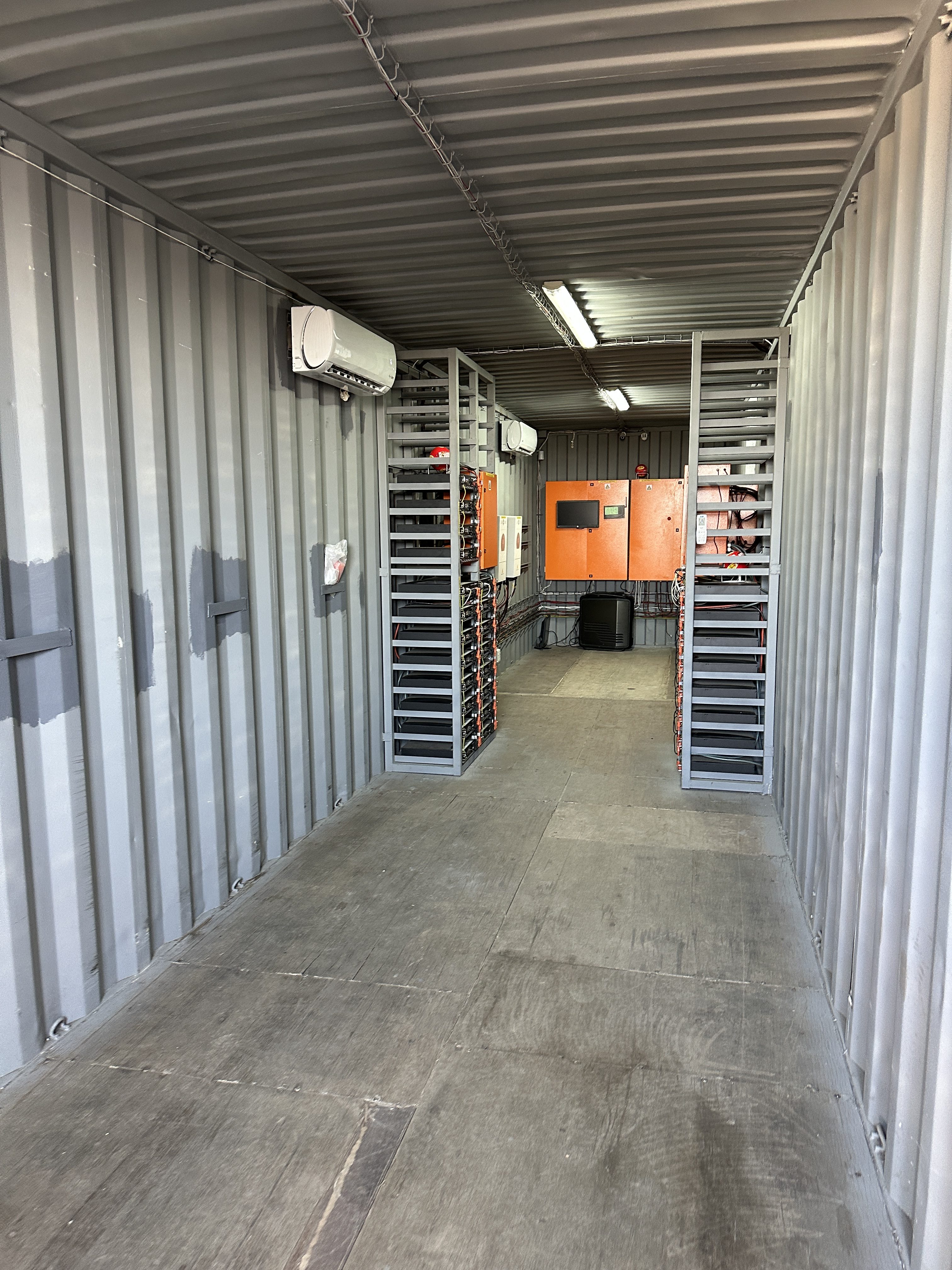
The interior of the shipping container. Seemingly empty, the container once held all the solar panels, illustrating how portable and compact the microgrid is. (Photo: Ethan van Diemen)
The pylons, cables, substations and transformers that connect the rest of South Africa to the grid have long eluded Swartkopdam as it is too remote for electrification to be economically viable.
According to Eskom, a mooted “feasible conventional solution” was to connect Swartkopdam by building a 200km 132kV line from the Gordonia substation and establishing a substation at Noenieput, which was estimated to cost R250-million.
Read more in Daily Maverick: Gordhan promises that ‘even if the long wires don’t come, electricity will come’ at launch of containerised microgrid project
The power utility went a different route. Eskom group chief executive for distribution, Monde Bala, added further details on the containerised microgrid project.
“We utilise this technology where proximity to the grid is a problem… where building the grid to those communities might be prohibitive cost-wise. So this is a solution that we are bringing as part of the electrification programme to make sure that even the remotest of areas are electrified.
“So with the 100 [microgrids] that we are targeting to do this coming financial year, we’ve been working with the Department of Mineral Resources and Energy in putting that plan together, so we are in the final stage of finalising the framework of how we’re going to get that done.
“But now that we have tested it here at Swartkopdam, we know it works and now we’re ready to roll out on a larger scale. So we’re planning for the 100 for this year and beyond that we are looking at a full-scale rollout,” Bala explained.
It is not simply a programme for areas beyond the reach of the grid, Eskom chairperson Mpho Makwana explained.
“It’s not purely about areas that are out of reach from transmission. It is an invention of Eskom… it is an invention that we developed at the back of the repurposing strategy, the just energy transition, so as we were preparing the roadmap for Komati, at the back of that we got this inspiration for the containerised microgrid.
“So it enables us to reach low-cost or low-use energy homes because you can do up to 50 at a time with a microgrid like that… they don’t have lots of appliances like the higher income families.
“So it’s easier to mitigate, first, load shedding for them – to insulate the poor from load shedding – and second, for communities like Swartkopdam, it’s the quickest way to get electricity to them for the first time. But this all falls within our just energy transition strategy.”
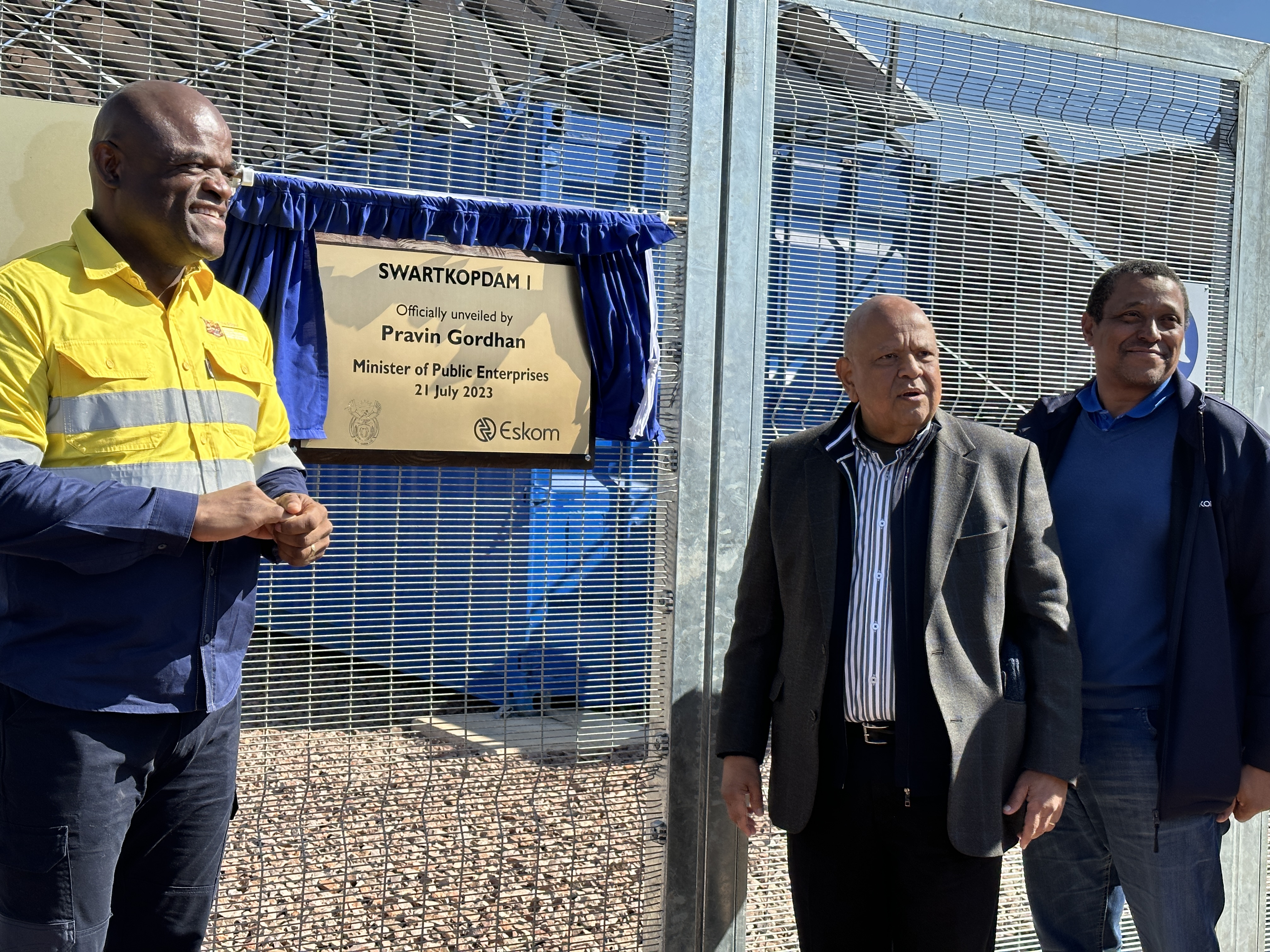
From left: Northern Cape Premier Dr Zamani Saul, Public Enterprises Minister Pravin Gordhan and Eskom group chief executive for distribution Monde Bala unveil the microgrid system in Swartkopdam on 21 July 2023. (Photo: Ethan van Diemen)
Public Enterprises Minister Pravin Gordhan explained what the microgrid project at Swartkopdam represents.
“This is part of the beginning of an industrial process. More and more of these need to be manufactured. You’ve got to start doing it at scale; you’ve got to create the capacity to actually do that, get the funding for it…
“At the moment, of the 39 houses – except for five that are using free basic electricity tokens – the rest are paying approximately R100 a month, so they will cover the cost of this [containerised microgrid] over the next five to six years. So it pays for itself for this particular community. It will vary depending on the communities we look at,” said Gordhan.
“The second thing is that it’s not just long distances… there are also parts of the country where the terrain is very difficult. You go to northern KZN, for example, and you have a very distributed population in terms of the way they’re settled. So this will begin to help in meeting the needs of particular localities as well.
“This is the start of the process,” said Gordhan. DM
To read all about Daily Maverick’s recent The Gathering: Earth Edition, click here.








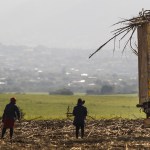

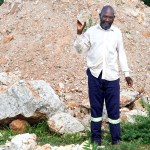








This is a great idea but one wonders how soon it will be before the cussedness of human beings kicks in…
43kW spread over 39 households is not much. About 9kWh per household during winter. That’s fine for some small lights, a TV and perhaps a small fridge (a small fridge takes about 4kWh/day).
As long as it stays there, fine! But it won’t be long before someone sneaks in a kettle, then a hot-plate or sets up a home business with two sewing machines a washing machine an a steam iron…. And the neighbours say “why not me too ?”
Before you know it the batteries are flat by 8pm and fingers start getting pointed and the fights start….
Far fetched pessimism…?
Not so. There are countless analogous rural water schemes that have suffered the same syndrome. Designed for “minimum” usage (60l/day/person) via a communal standpipe the supplying authority soon finds water running out when individuals install unregulated private connections to their houses for flush toilets, showers and kitchen sinks. Then someone starts manufacturing building blocks. Others start watering their veggie gardens and selling the produce. Everyone who owns a few goats or cows sets up a watering trough….
And then people living close by say “Hey , free water ! Let’s move there and get ours !” and the population density explodes…
And by 10 in the morning the reservoirs run dry…
DWS is still struggling to find an answer to human cussedness….
Will ESKOM ?
I was thinking the same thing.
Just one point: I think you should check your calculator. 43/39 = a lot less than 9 kW average per household – and I wonder about the repeated reference to boiling kettles in the article, because a kettle typically pulls betwween 2 and 3 kW on its own. Then as you say, soon will come the steam irons and probably hot water cylinders 🥴
During the day with no clouds the solar panels should provide to charge the batteries and use for kettles etc. The problem starts when the sun drops down and generation stops. Now all are reliant on the batteries but this is not a problem a smart meter can’t sort out. Put limits for instantaneous consumption according to time of day rules and switch them off when a certain daily energy limit is reached.
Look carefully. There is a significant difference between kW and kWh.
43kW/35 houses=1.23kW x 7.3 hours of usable sunlight per day = 9kWh.
Regarding a kettle. A 2kW kettle boils in say 3 minutes. 2×3/60 = 0.1kWh per boiling session. So you can boil it 10 times per day to use 1kWh.
Each unit will presumably have a smart meter installed. Those can be programmed to shut off the power either if excessive instantaneous current is being drawn or if a daily limit has been reached.
The system that has been installed is also very scalable. Still lots of room in the container for additional batteries and inverters. Lots of space outside for additional panels.
Except for the issue of who is paying for this system, it is an entirely workable system, assuming that adequate security is in place.
And your last sentence/paragraph is very very pertinent. Who is paying, for the installation and the usage? Hopefully the consumers.
I agree with these comments. And why electric geysers and not solar geysers?
And the cost of this system?
Users will need to be educated about appliance power use too, as well as learning
to limit their consumption.
A “just” transition also means just using a little power so you do not take your neighbour’s
share!
This is great! 35 households times R100 a month each is R3,500 income. R42K year. Over 6 years that’s R252k for a 43kW system? I want a hundred and eleventy. No wait. Listen carefully.
But let me guess. Pravin the muppet can’t do math and “left off” a zero or two. Good to see he doesn’t let that stop him from lying to everyone about the costs. You know, because it’s not convenient.
Oh this is so exciting. Some real progressive good news at last. Onward, Microgrids! Onward!!
Well, well! A Good News story. And Eskom is involved 😂🤣
Not sure that I believe the numbers in terms of the payback, but it’s certainly a start. Well done, all.
With an average R5000 pm electricity bill for two people living in KZN, we would welcome a similar initiative in our area!!!
This is a good start. Nobody should be denied electricity.